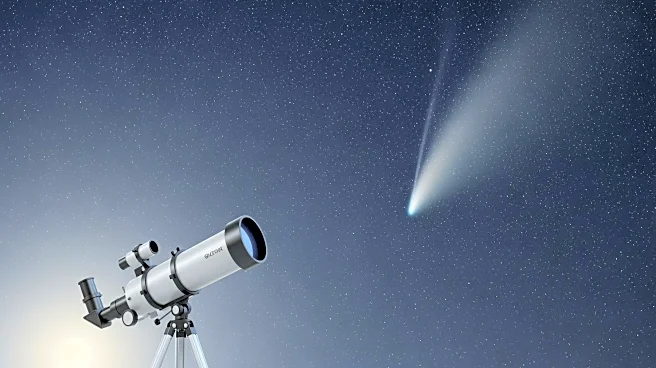What's Happening?
The largest and closest supermoon of 2025 will occur on November 5, reaching its closest point to Earth, known as perigee, at 5:30 P.M. Eastern Time. This supermoon will be approximately 221,726 miles from Earth, making it about 2,800 miles closer than
the previous supermoon in October. The phenomenon, known as the 'Moon illusion,' may cause the moon to appear larger when it is low on the horizon. Despite the subtle differences in size and brightness, the supermoon provides a striking visual for photographers and skywatchers.
Why It's Important?
The supermoon presents a significant opportunity for photographers and astronomy enthusiasts to capture the moon in its most impressive form this year. The event highlights the moon's elliptical orbit and its effects on Earth's tides, which can lead to higher than normal tides, known as perigean spring tides. These tides can impact coastal areas, potentially exacerbating flooding if coinciding with storms. The supermoon also serves as a reminder of the natural cycles and phenomena that influence our planet, offering educational opportunities about lunar phases and their effects.
Beyond the Headlines
While the supermoon is visually captivating, its scientific significance lies in its ability to demonstrate the moon's gravitational effects on Earth. The increased tidal forces during a supermoon can have ecological and environmental impacts, influencing marine life and coastal ecosystems. Additionally, the cultural and historical significance of the moon, often reflected in folklore and traditions, adds a layer of human interest to the event. The supermoon also encourages public engagement with astronomy, fostering a greater appreciation for celestial events.














